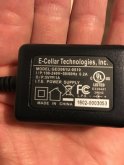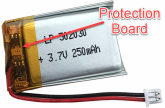electricity is not water.
with water, when you put pressure in the pipe, it will force its way through any hole it finds.
with electricity, it is not a push system, it is a pull system.
You created a demand on your side, and the electricity comes to you. No demand and no electricity flows.
So, when devices are rated, they show the maximum demand they can issue.
So your charger is asking 0.2A when on AC, that translate to an output of 1A under 5V.
So if you connect your collar to a DC 5V source, it should not require more than 1A (and probably well under).
and your duty is to make sure the source of energy is able to provide at least 1A (but it could be a multi megawatt nuclear power plant, it would make no difference.)
So you can take a 10A 5V power supply , it will never be asked more than 1A from the collar.
since devices work well when they are in use with the rating range , you will better use a DC converter that is able to deliver between 1-2 A, that limits the price, size , weight and loss in heating.
But if you want to take advantage of having one 5V source to connect not only the collar, but also charge your smartphone and other 5V devices, you could target a DC converter able to support 5-10A.
This is a strategy that can be your choice.
have one central power supply that provide 5V for everything that requires 5V, or use POS (point of supply) properly sized for each device.
This is something you find in modern cars.
Before , all was connected on the 12V from the battery and running at 12V.
With modern technology, lots of devices are running at 5V or even lower (from 1.5 to 9V).
so each device comes with its own DC/DC converter that is sized to supply just the load it is connected on.
it is cheaper on cabling and connectors.





